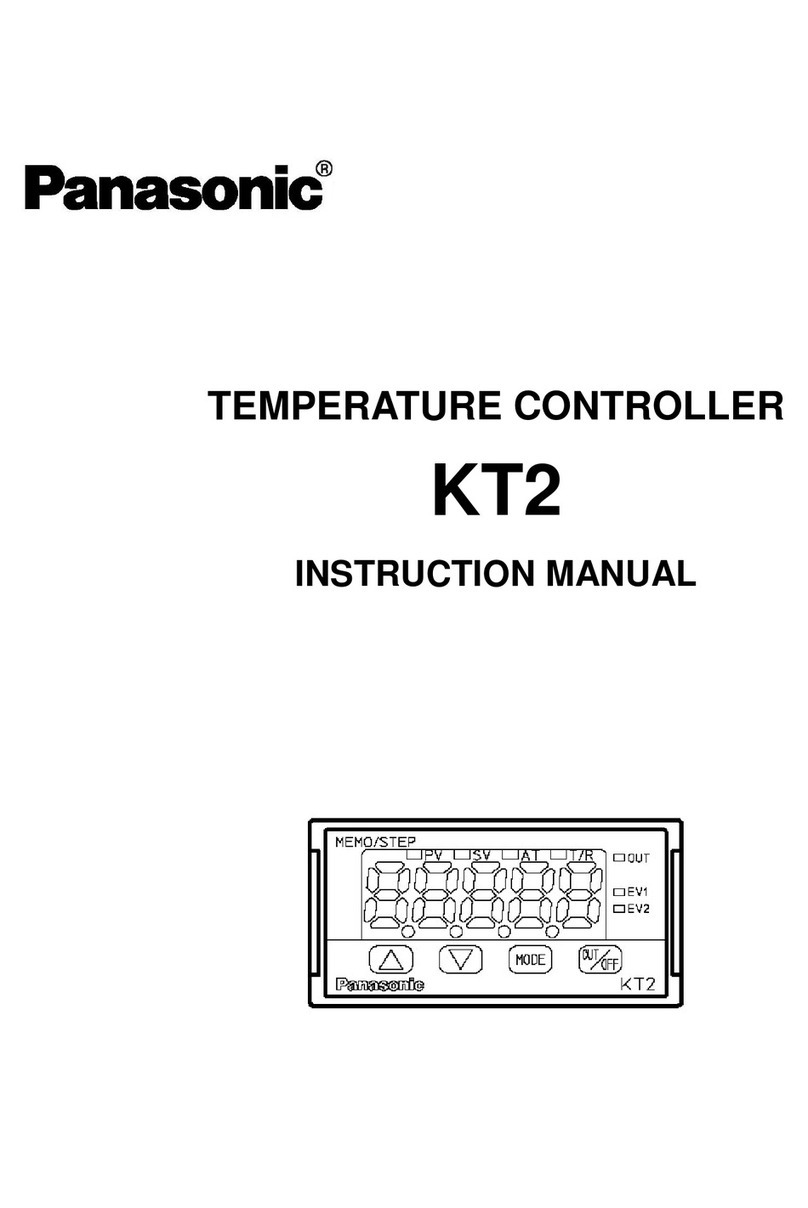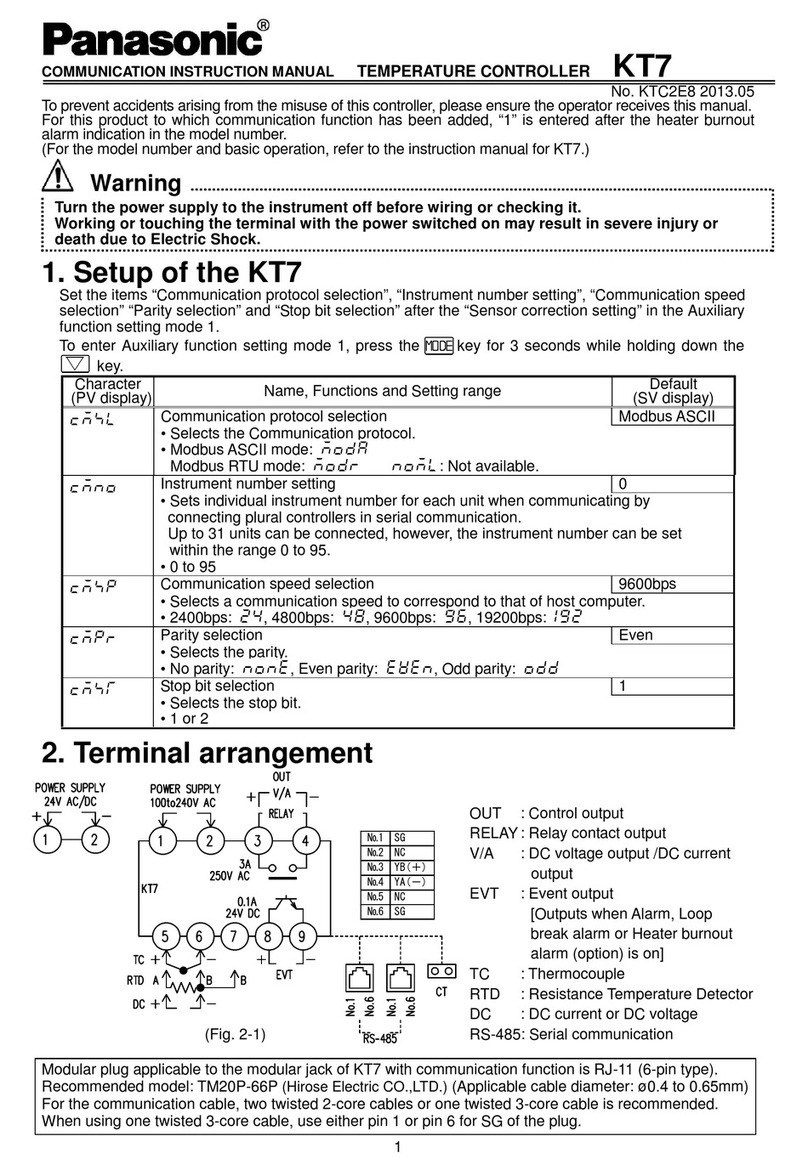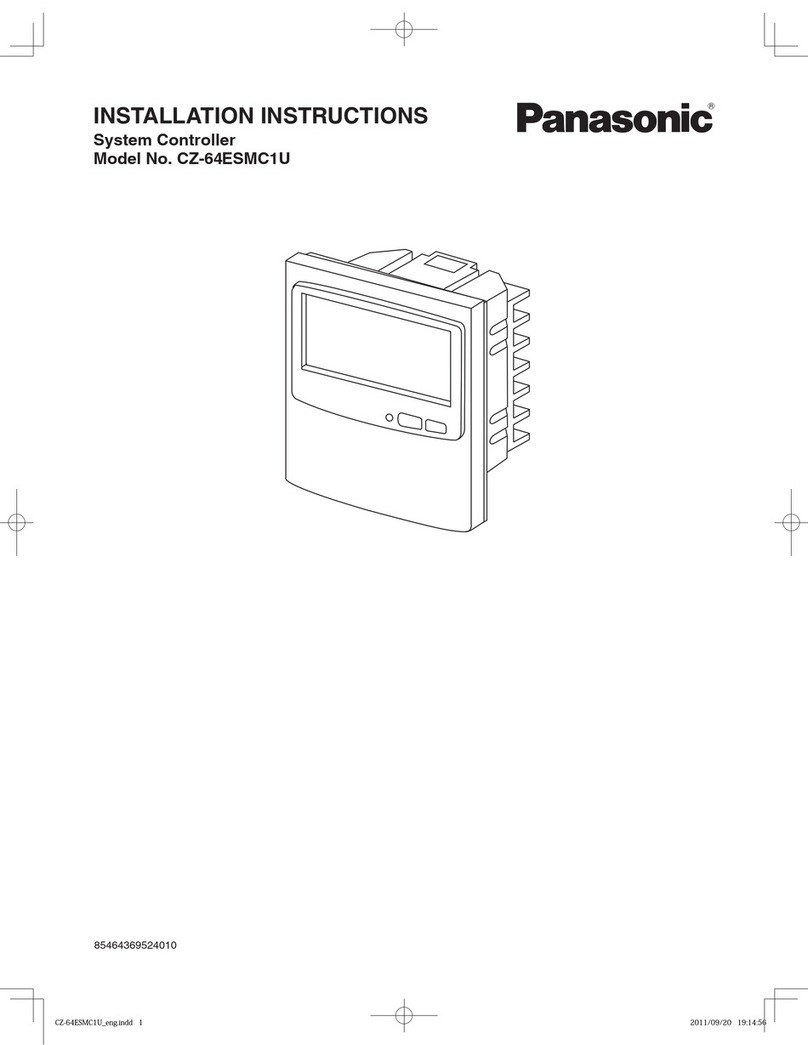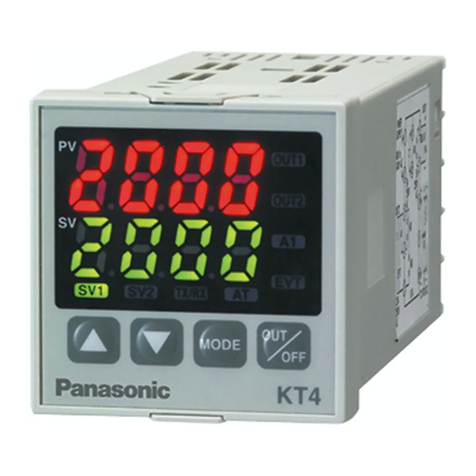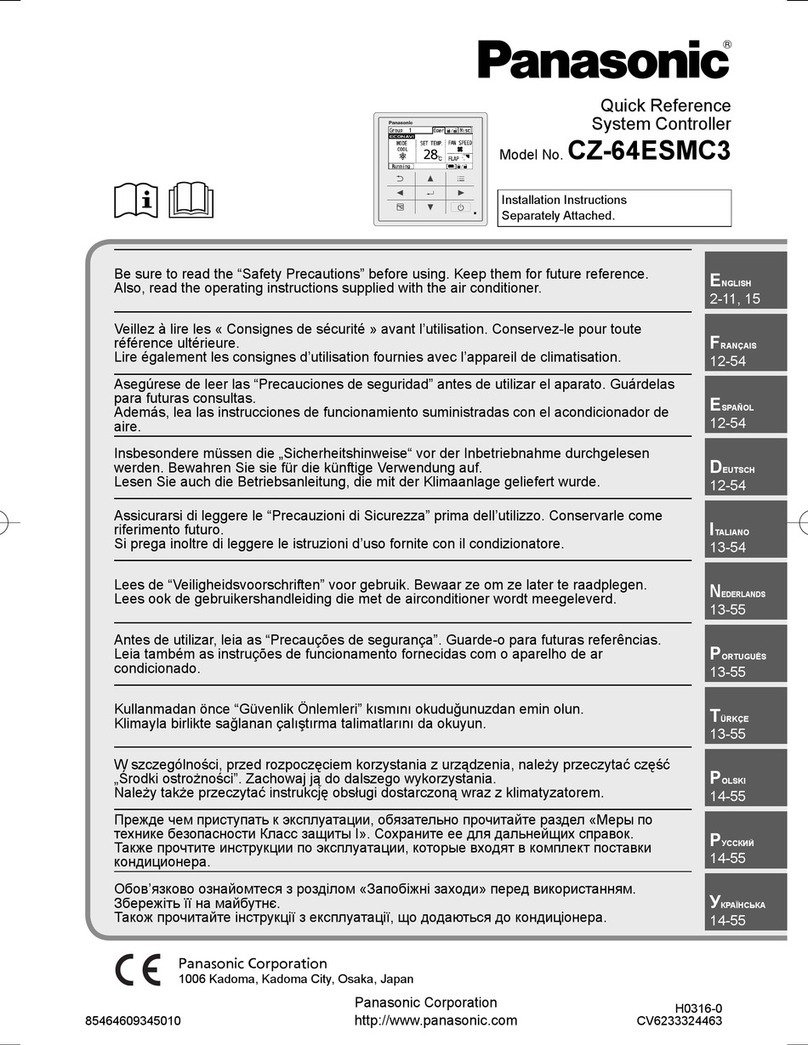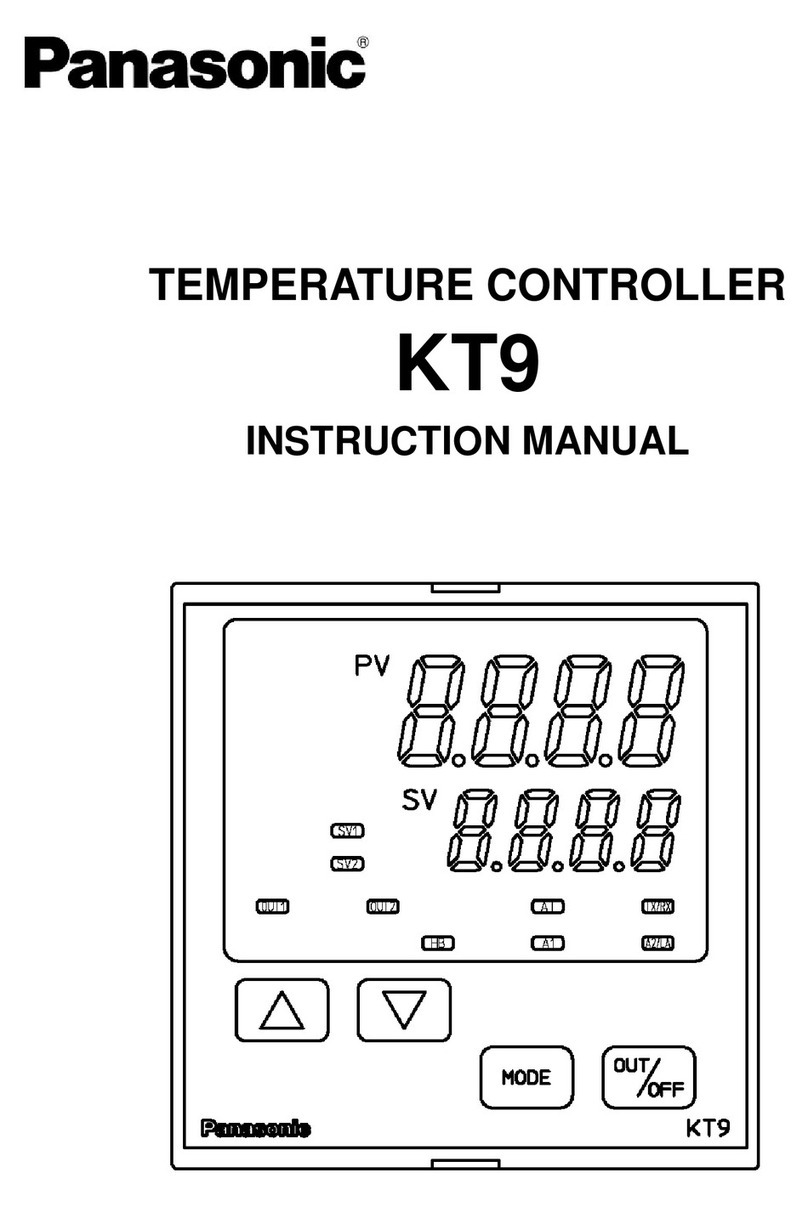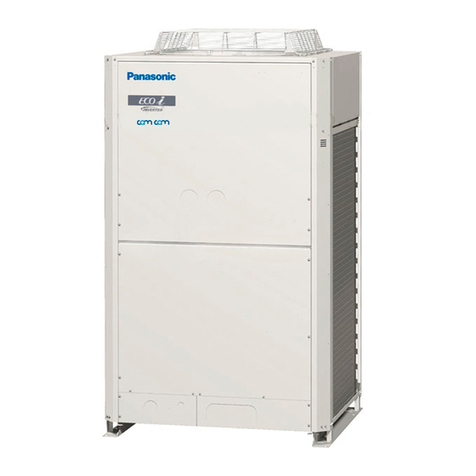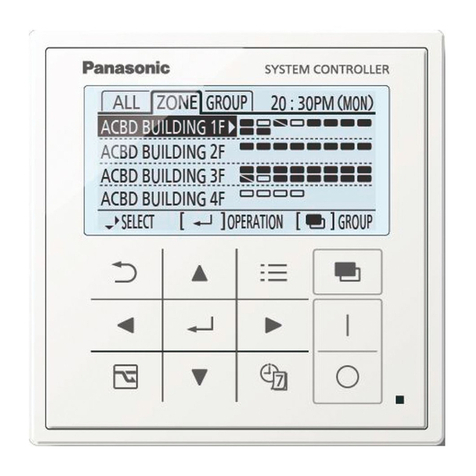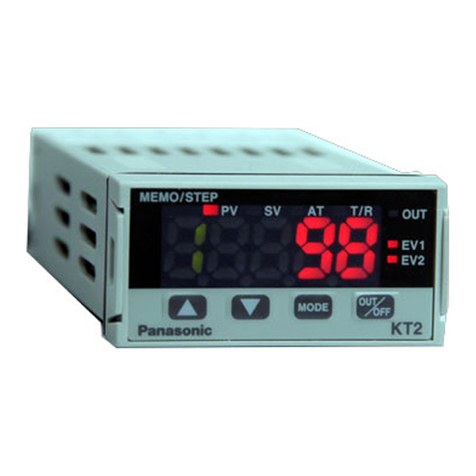
2
CONTENTS
1. Model number Page
1.1 Model number ----------------------------------------------------------------------------- 5
1.2 How to read the rated label ------------------------------------------------------------ 5
2. Name and functions of the sections ------------------------------------------- 6
3. External dimensions
3.1 External dimensions ---------------------------------------------------------------------- 7
3.2 Tool cable (AKT4H820) external dimensions -------------------------------------- 7
3.3 CT (Current transformer) external dimensions ------------------------------------ 7
3.4 Terminal cover (AKT4H801) external dimensions -------------------------------- 8
4. Mounting to the control panel ------------------------------------------------------ 9
4.1 Panel cutout ------------------------------------------------------------------------------- 9
4.2 Mounting and removal to/from the control panel ---------------------------------- 9
5. Wiring
5.1 Terminal arrangement ------------------------------------------------------------------ 10
5.2 Lead wire solderless terminal -------------------------------------------------------- 10
5.3 Wiring of Heater burnout alarm ------------------------------------------------------ 10
6. Settings
6.1 Setting procedures ---------------------------------------------------------------------- 11
6.2 Setup --------------------------------------------------------------------------------------- 11
6.3 Basic operation of settings ------------------------------------------------------------ 11
6.4 Operation flowchart --------------------------------------------------------------------- 12
6.5 Main setting mode ----------------------------------------------------------------------- 13
6.6 Sub setting mode ------------------------------------------------------------------------ 14
6.7 Auxiliary function setting mode ------------------------------------------------------- 16
6.8 Setup mode ------------------------------------------------------------------------------- 18
7. Operation
7.1 Starting operation------------------------------------------------------------------------ 23
7.2 Control output OFF function----------------------------------------------------------- 23
7.3 Auto/Manual control switching ------------------------------------------------------- 24
7.4 Indicating Output MV (manipulated variable) ------------------------------------ 24
7.5 Auto-tuning/Auto-reset Perform/Cancel ------------------------------------------- 24
8. Basic usage
8.1 ON/OFF control ------------------------------------------------------------------------- 25
8.2 PID control ------------------------------------------------------------------------------- 25
8.3 How to use the alarm output --------------------------------------------------------- 25
8.4 Changing PV color ---------------------------------------------------------------------- 26
9. Auto-reset and ARW
9.1 Auto-reset --------------------------------------------------------------------------------- 27
9.2 ARW (Anti-reset windup) -------------------------------------------------------------- 27
10. Auto-tuning --------------------------------------------------------------------------------- 28
11. Action explanation
11.1 OUT1 PID, PI, PD, P actions ------------------------------------------------------- 29
11.2 OUT1 ON/OFF action ---------------------------------------------------------------- 29
11.3 Heater burnout alarm action -------------------------------------------------------- 30
11.4 Alarm action ----------------------------------------------------------------------------- 30
11.5 OUT2 (Heating/Cooling control) action [Reverse (Heating) action] ------- 31
11.6 OUT2 (Heating/Cooling control) action [Reverse (Heating) action]
(When setting dead band) ----------------------------------------------------------- 31
11.7 OUT2 (Heating/Cooling control) action [Reverse (Heating) action]
(When setting overlap band) ------------------------------------------------------- 32
11.8 OUT2 (Heating/Cooling control) action [Direct (Cooling) action] ---------- 32
11.9 OUT2 (Heating/Cooling control) action [Direct (Cooling) action]
(When setting dead band) ---------------------------------------------------------- 33
11.10 OUT2 (Heating/Cooling control) action [Direct (Cooling) action]
(When setting overlap band) ------------------------------------------------------ 33
11.11 SV rise rate, SV fall rate setting action ----------------------------------------- 34
12. Communication
12.1 System configuration ----------------------------------------------------------------- 36
12.2 Wiring ------------------------------------------------------------------------------------ 36
12.3 Communication parameter setting ------------------------------------------------ 38
12.4 Communication procedures -------------------------------------------------------- 39
12.5 MEWTOCOL --------------------------------------------------------------------------- 40
12.6 Modbus protocol ----------------------------------------------------------------------- 47
13. Specifications
13.1 Standard specifications -------------------------------------------------------------- 57
13.2 Optional specifications --------------------------------------------------------------- 60
14.Troubleshooting
14.1 Indication -------------------------------------------------------------------------------- 62
14.2 Key operation -------------------------------------------------------------------------- 63
14.3 Control ----------------------------------------------------------------------------------- 63
14.4 Communication------------------------------------------------------------------------- 64

